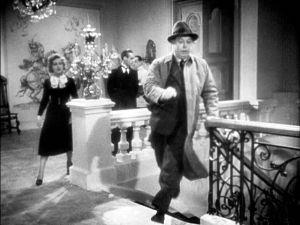Concept of Authorship (Discussion)
From Screenpedia
Readings
Introduction, by John Caughie
Group 2
- What are the basic assumptions of auteurist critics?
- How did auteurism differ from previous film criticism?
Edward Buscombe
Group 3
- What elements of romanticism underpin auteurism?
- What is the difference between Hawks and "Hawks"?
- Student response: Hawks is the person, the director, while 'Hawks' is the structure named after the director. Another person could, or instance, follow the structure and produce a movie with a 'Hawks' structure, but it would still not be a movie directed by Hawks. Also, a certain style could be unconscious and part of 'Hawks' but not necessarily a conscious decision by Hawks. The 'Hawks' structure is a sort of culmination of everything about Hawks, whether it is all intended or not. "The structure is associated with a single director, an individual, not because he has played the role of artist, expressing himself or his own vision in the film, but because it is through the force of his preoccupations that an unconscious, unintended meaning can be decoded in the film, usually to the surprise of the individual concerned... It is wrong, in the name of a denial of the traditional idea of creative subjectivity, to deny any status to individuals at all."
Cahiers du Cinéma
All Groups
- What is "formalism" and how did it relate to Cahiers-style auteurism?
- What is "personalism"?
Movie
Group 4
- What was Movie?
- How did Movie's approach to auteurism differ from that of Cahiers du Cinéma?
- Student Response: _Movie_ attempted to go about film criticism with a more rational and objective approach. While both magazines held high the significance of the role of the director, _Movie_ was more moderate than _Cahiers du Cinéma_ in its application of auteurism. The British magazine employed a more "gestalt" approach, which acknowledged trends of good directors but also respected the result of complexes of input beyond the director (producer, photographer, etc.).
Andrew Sarris
Group 1
- What, according to Sarris, are the three premises of the auteur theory?
- Explain, if you can, what Sarris means by "élan of the soul".
All Groups
- What does Sarris mean when he uses the term "mise-en-scene"? (Hint: it's not how Bordwell and Thompson use it in Film Art.)
- And how does this image (below) illustrate it?
Pauline Kael, "Circles and Squares," Film Quarterly (reprinted in I Lost It at the Movies), response to Sarris:
- Sarris believes that what makes an auteur is "an élan of the soul." (This critical language is barbarous. Where else should élan come from? It's like saying "a digestion of the stomach." A film critic need not be a theoretician, but it is necessary that he know how to use words. This might, indeed, be a first premise for a theory.) Those who have this élan presumably have it forever and their films reveal the "organic unity" of the directors' careers; and those who don't have it - well, they can only make "actors' classics." It's ironic that a critic trying to establish simple "objective" rules as a guide for critics who he thinks aren't gifted enough to use taste and intelligence, ends up - where, actually, he began - with a theory based on mystical insight.
Bibliography
All from Theories of Authorship, John Caughie, ed. (Boston: Routledge & Kegan Paul, 1981):
- Introduction, John Caughie, 9-16.
- Edward Buscombe, "Ideas of Authorship," 22-34.
- Cahiers du Cinéma, 35-47.
- Movie, 48-60.
- Andrew Sarris, 61-67.
External links
- Auteur Theory Illustrations
- Auteurism's defining moment, according to Sarris.
